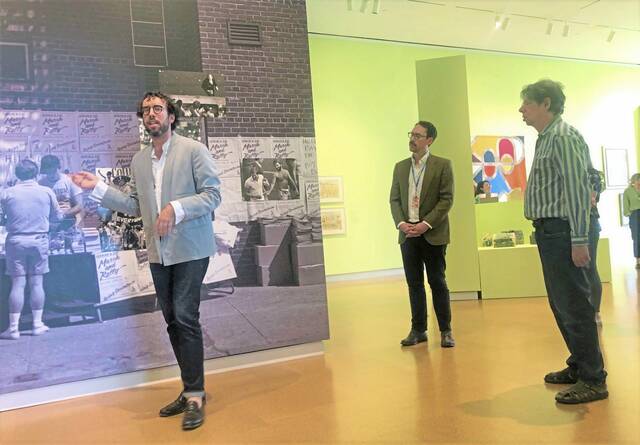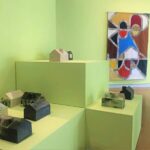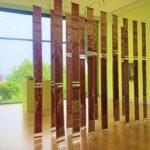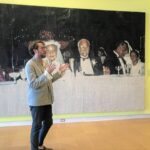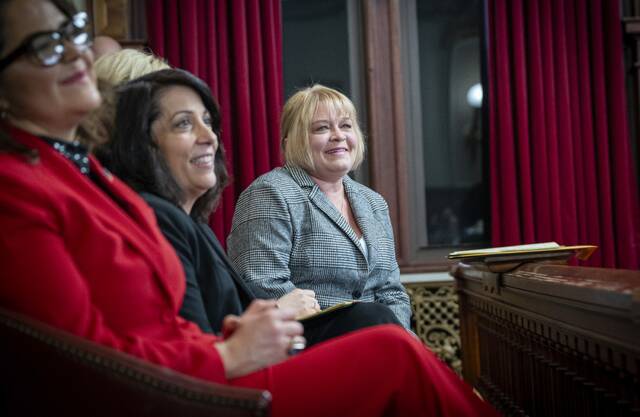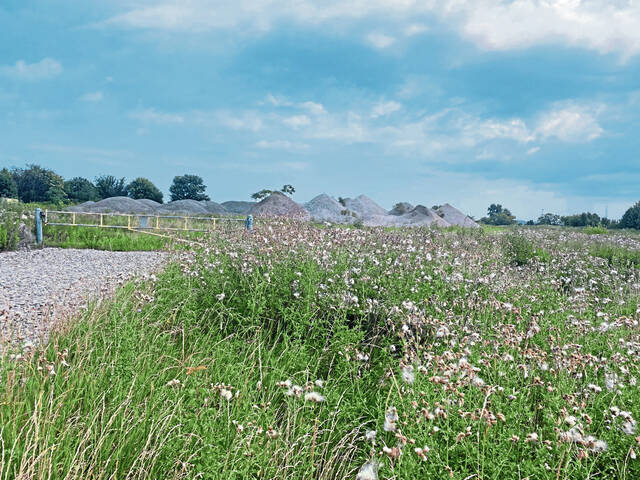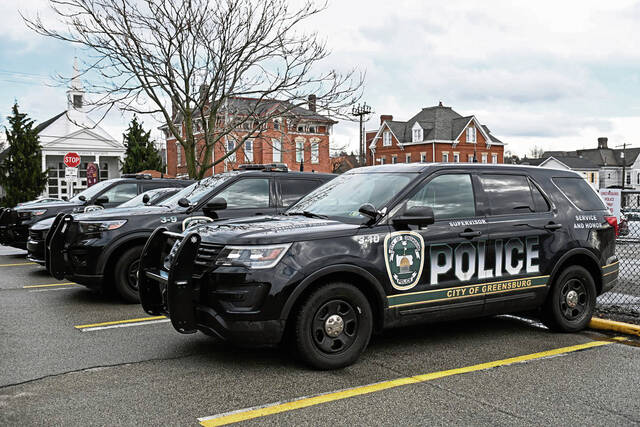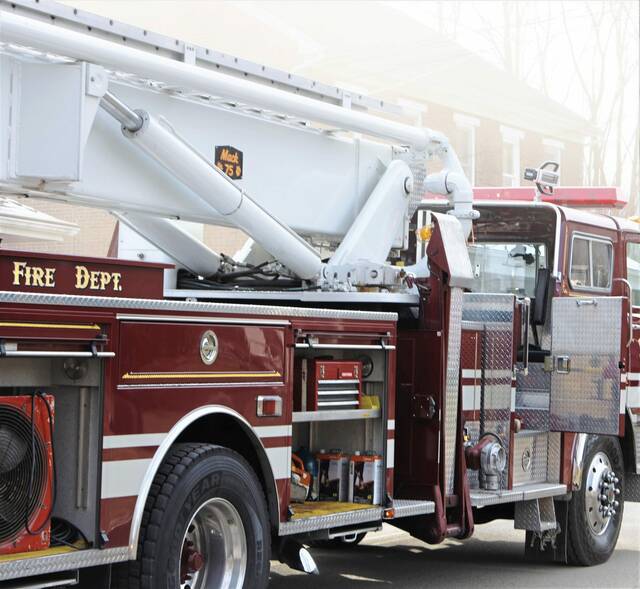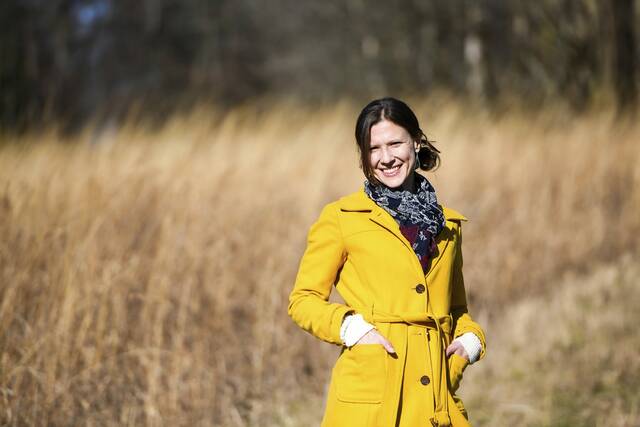The current exhibit at The Westmoreland Museum of American Art is titled “Block Party: Community and Celebration in American Art,” but chief curator Jeremiah William McCarthy warns that visitors won’t find a single image specifically depicting that phenomenon.
Rather, the works explore themes and emotions that might be tied to such an event.
“We hope a viewer leaving the exhibition will have gone through a chain of emotions that are being expressed at the different points of a block party,” he said during a June 28 gallery tour at the Greensburg museum.
McCarthy said the idea for the exhibition began as a response to recent major exhibitions he had seen, including the Carnegie International at the Carnegie Museum of Art in Pittsburgh.
That International, he said, was “beautiful, extraordinary, but very serious. I thought, ‘We need to do the opposite, we need to do a show about celebration.’”
The timing was perfect, coinciding with this year’s Westmoreland 250, a celebration of the 250th anniversary of the founding of Westmoreland County.
“That started brewing the idea of an exhibition that’s a party for the county,” McCarthy said.
While researching parties, he came across information on block parties, which originated in New York City’s East Side during World War I as people pooled their resources to give soldiers a send-off to war.
“The idea of having a celebration with a poignancy resonated,” McCarthy said. “(The exhibition has) a lot of work that is celebratory, colorful and expressive, but there’s kind of a seriousness to the concern that underlies it.”
“Block Party” features both modern and contemporary works in various media, including video and audio, installed in several galleries and the atrium stairwell.
“There is no single entry point to this work, it flows throughout museum,” McCarthy said.
Collective memory
Works come from The Westmoreland’s collection, along with loans from 28 individual artists, one artist collective and other museums and foundations across the country.
They depict communal activities like weddings and dances, along with places where people gather, such as homes, religious spaces, city streets, gas stations, grocery stores and even a dimly lit jazz club.
“In organizing the exhibition’s different themes and thinking about site, collective memory, ritual and symbols, we realized that a lot of the work was doing things with each of those themes,” said Danny Volk, the museum’s Terra Foundation for American Art Curatorial Fellow who organized the exhibition with McCarthy.
Included from The Westmoreland’s collection is an oil painting by the late Greensburg artist, Dorothy Lauer Davids, both dating to the 1940s.
“Duke Street Market” captures shoppers at a local grocery store.
“Dorothy Lauer Davids was very important in Greensburg,” McCarthy said. “When she passed (in 1980), she left basically her entire estate to The Westmoreland Museum. The Westmoreland retained about 50 of her works and then distributed and sold the others.
“I’ve always found her work endlessly fascinating,” he said. “I just thought she was recording things she had once seen or amalgamations of life in Greensburg, but they were actually specific places and times in many of her paintings.”
Support for “Block Party” was provided by The Heinz Endowments, The Fine Foundation and The Westmoreland’s Hillman Exhibition Fund. It runs through Sept. 17.


